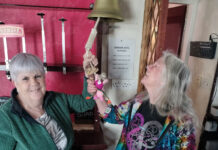Numbers rise as fares fall, bringing a boost to trade for many
By Jack Walsh
With the summer season almost in full swing, Scotland’s island operators will be gearing up for the busy months ahead.

And the country’s ferry services play an important role.
Island operators have long depended on ferries to transport deliveries and visitors; yet high fares have been a thorn in their side for decades, with many arguing that fare prices set them at a disadvantage to their mainland counterparts.
In a bid to help combat this, the Scottish Government has, since 2008, rolled out a new pricing system.
Known as the Road Equivalent Tariff (RET), the scheme sets ferry fares on the basis of what it would cost to travel the equivalent distance by road.
 Initially piloted on routes to the Western Isles, Coll and Tiree in October 2008, the RET scheme was rolled out to Islay, Colonsay and Gigha in October 2012; Arran and Ardrossan – Campbeltown in October 2014; and then to all remaining Clyde and Hebrides ferry routes in October 2015.
Initially piloted on routes to the Western Isles, Coll and Tiree in October 2008, the RET scheme was rolled out to Islay, Colonsay and Gigha in October 2012; Arran and Ardrossan – Campbeltown in October 2014; and then to all remaining Clyde and Hebrides ferry routes in October 2015.
And, according to Caledonian MacBrayne (CalMac), it’s had a notable impact.
Figures released by the ferry operator, which mark the first full year since RET was rolled out across its entire network, revealed that the number of passengers carried by CalMac ferries in 2016 topped five million for the first time in 20 years.
There is said to have been a significant increase in both the number of passengers using the service (+9.27%) and the number of cars taken onboard (+15.96%); in total, 5,055,827 passengers and 1,356,396 vehicles boarded the ferries last year.
Several operators have noticed the increase.
Speaking to SLTN, Frances MacIntyre, manager of the Craigard Hotel on the Isle of Barra, said “it’s definitely had a vast effect”, adding that as the ferry now sails on a Sunday, the hotel has seen a real boost in terms of weekend trade.
“Before it would come in on a Saturday and it wouldn’t leave on a Sunday; it would go on a Monday,” she said.
“It’s so much handier for people who want to come up for the weekend.”
In Sleat on the Isle of Skye, Martin Nel, general manager of the Hotel Eilean Iarmain, said: “We noticed last year, summer was really, really busy.
“Our lunch trade was very big, with people just coming across for the day.”
Even mainland outlets are benefitting.
Declan Curran, owner of The Lorne bar in Oban, said the RET “would most certainly have been a factor in what was a bumper season for Oban and the islands”.
However, not all operators have witnessed such a positive impact.
Alasdair Miller, manager of bar and restaurant Frasers Bar in Millport on Cumbrae, said despite an increase in people visiting the island, there hasn’t been a notable difference in trade since the roll-out of RET.
“It just seems to be ticking away much the same for us,” he said. “I’ve noticed a lot more cars in the town and lot more people but business-wise I wouldn’t say we’re any busier.”
In the Ardnamurchan village of Kilchoan, David Cash, who co-owns the Meall Mo Cridhe guest house, said the RET scheme “is definitely good for the area”.
Laura Helliwell, owner of The Ormidale Hotel on the Isle of Arran, agreed that the price initiative has had a positive impact.
“The whole island is definitely just busier,” she said.
“There’s been a significant difference in turnover and customers.”
Meanwhile, hotelier Christine Weaver, who co-owns The Bellachroy Hotel on the Isle of Mull, admitted that while there has been a rise in visitor numbers, it’s putting pressure on facilities in the area.
“I think there needs to be a bit more infrastructure to the island; a lot of locals get frustrated about traffic on roads and camper vans being parked in places they shouldn’t overnight,” she said.
Overall, Weaver said time will tell how reduced fares impact on rural trade.
“I think it’ll be interesting to see how it pans out,” she added.
“Obviously the first year, it’s difficult to gauge, you have to build a pattern; and on one year you can’t really do that.
“I think certainly for us the jury is still out.”



















